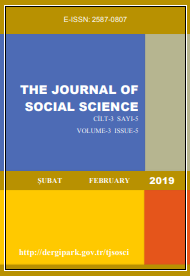İSLAMİYET’TE TASVİR YASAĞI VE TÜRK MİMARİ SÜSLEME SANATINDA İNSAN FİGÜRÜNÜN KULLANIMI
ANICONISM IN ISLAM AND USE OF HUMAN FIGURES IN TURKISH ARCHITECTURAL DECORATIVE ART
Author(s): Şenay Sayın AlsanSubject(s): Architecture, Visual Arts, Islam studies
Published by: Dicle Üniversitesi, Sivil Havacılık Yüksekokulu
Keywords: Human; figure; decoration;
Summary/Abstract: The use of the human figure as an ornamental element is less frequent and limited than the geometric, vegetable and animal motifs. The main reason is the false belief that in the Quran, there is a proscription of depiction and it does not allow the human figure to be used as an element of representation in painting, sculpture or architecture. In Islam, there are no expressions indicating the proscription of the depiction of the human figures in the verses and in the hadiths. We see many examples of the use of the human figures in civil architecture and plastic arts in Early Islamic Art. Although Islam does not explicitly prohibit the depiction of the human figure, such a concept has emerged later. In pre-Islamic and post-Islamic Turkish art, the depiction of the human figures is seen as a decoration on structures such as imarets, tombs, madrasahs, tekkes and old Turkish hospitals by using materials such as stone, wood, metal etc. Even though they have the traces of the pre-Islamic belief systems, the examples where figurative depictions have been applied after accepting Islam gradually decreased and geometrical and floral motifs gained importance. In this article, aniconism is studied and the examples of the human figures that are used more rarely than those of geometric and foliage patterns in Anatolia are emphasized. On the basis of written sources, the iconographic analysis and decoration of figurative depictions are examined.
Journal: The Journal of Social Science
- Issue Year: 3/2019
- Issue No: 5
- Page Range: 285-313
- Page Count: 29
- Language: Turkish

